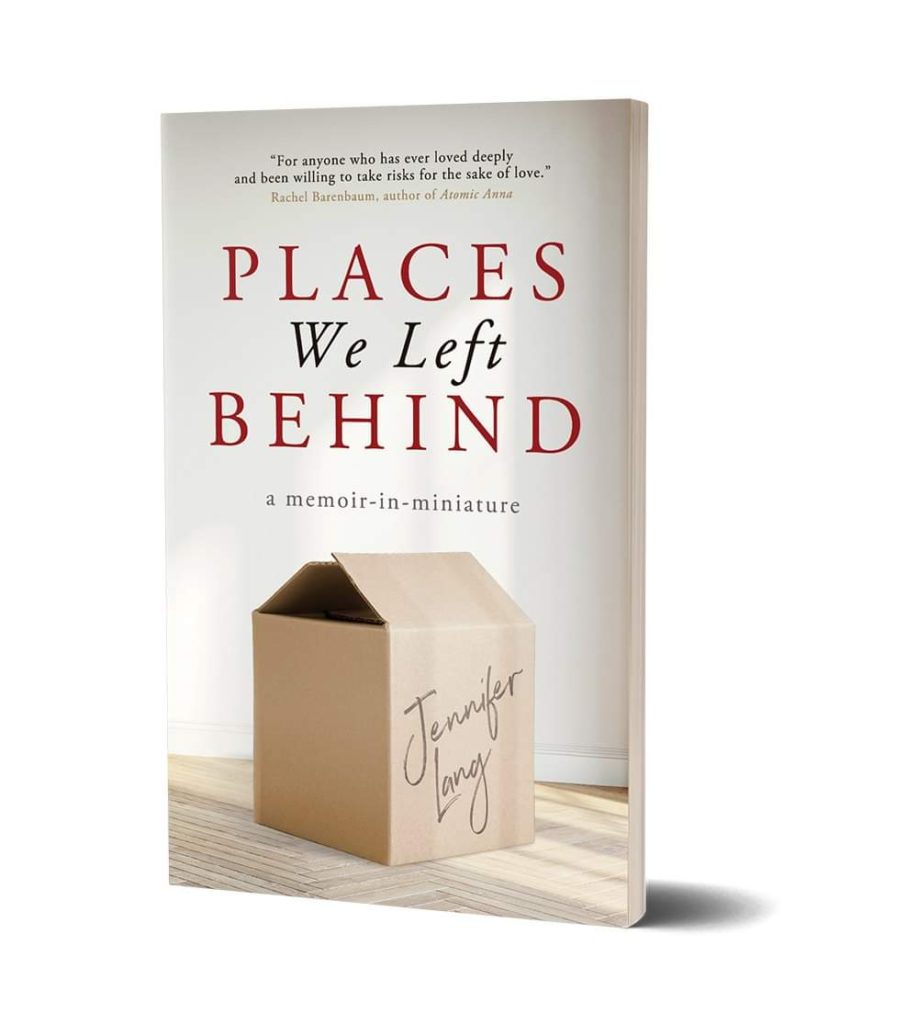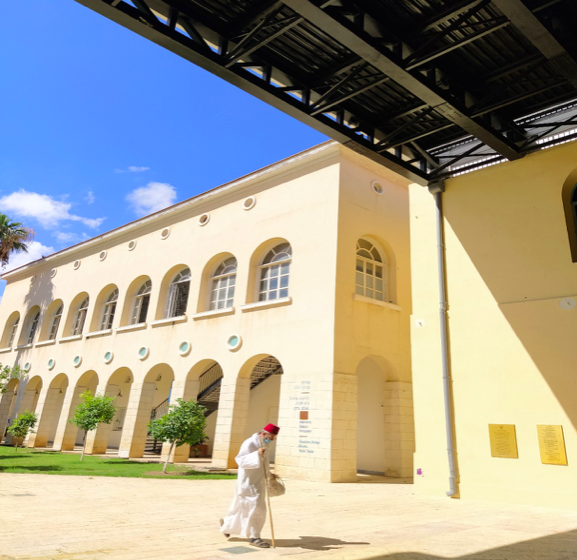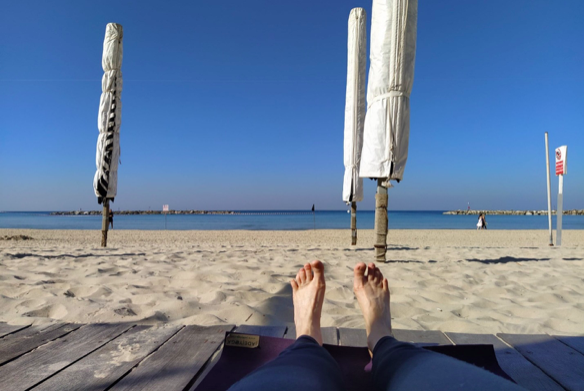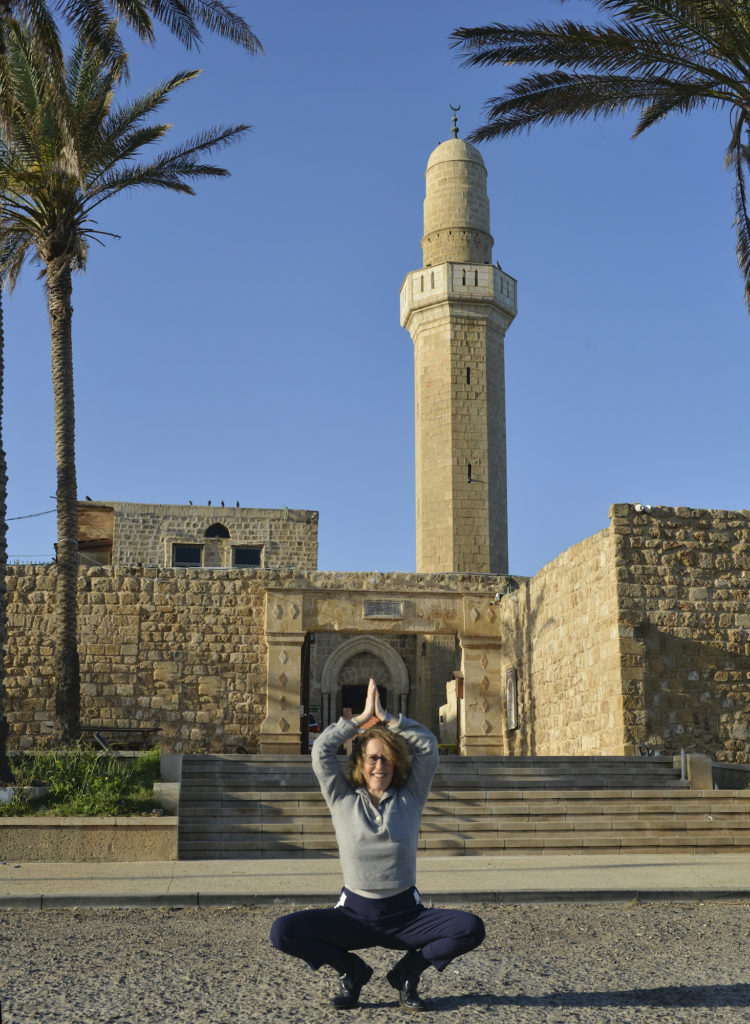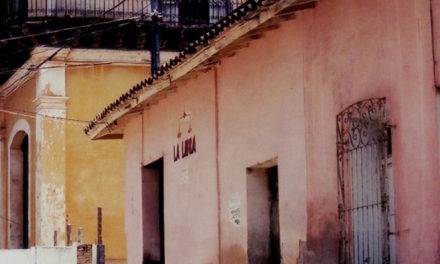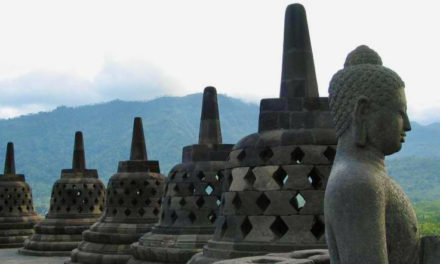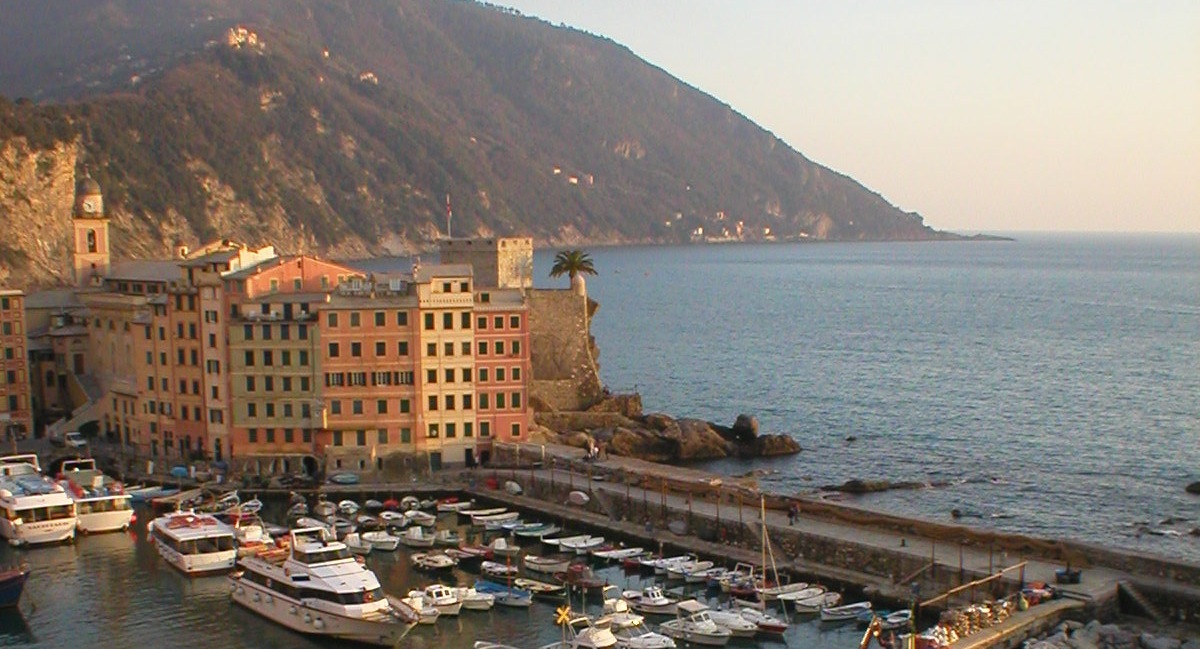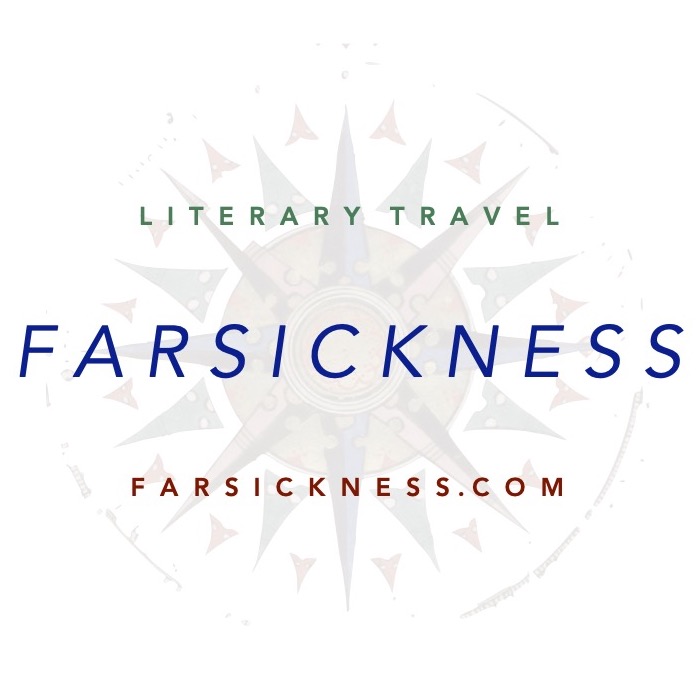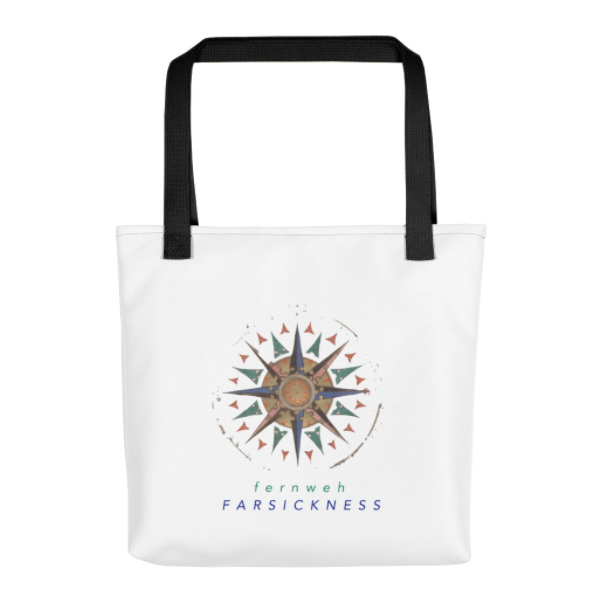Four Questions on Farsickness is an interview series with creative writers for whom place is essential to their work. Each writer answers the same four questions—and featured here is essayist Jennifer Lang, whose hybrid collection, Places We Left Behind: a memoir-in-miniature, will be published by Vine Leaves Press in September 2023 and is currently available for preorder.
1. Share a little about where you’re from. When you were growing up, what place—real or imagined—most fascinated you, and why?
I come from a place where many people dream of living: the far left side of the map of the United States of America, the San Francisco Bay Area, the Wild, Wild, West,
where no one cares what color your purse is or if your toe nails are painted, what you’re wearing or if you shave;
where the recipe for a good life = daily exercise + healthy food;
where zany inventions like television and slot machines and Murphy beds were created and unusual culinary treats like sourdough bread and It’s-It ice cream sandwiches and Green Goddess dressing first tasted,
where being different is more respected than blending in and the Free Speech Movement took hold the year before I was born.
My birthplace—12 miles due east of the City by the Bay—conjures cable cars and fortune cookies, Black Panthers and Painted Ladies, Ghirardelli chocolate and AIDS, along with the Guinness Book of World Records’ most crooked street in the world, ☮ and ♥.
I come from a place where, on clear days, you can glimpse the scarlet red Golden Gate Bridge anchored in the steel blue Pacific Ocean from certain hilltops—and every time, it makes me weep.
Growing up in a tiny (under 10,000), residential (one bank, one convenient store, one gas station), homogeneous (think White and Christian) city surrounded by Oakland on all sides, I was most fascinated by the gritty streets on the southern end of the U.C. Berkeley campus. As a teenager in the early 80s, I loved to take the bus with friends and stroll College Avenue, buy Swedish Fish and Jelly Belly Sours from the glass jars behind the counter at Sweet Dreams Toy Store, before heading north to Telegraph Avenue. It was partly to see student life and all that awaited us after high school graduation but mostly to witness the colorful faces of Other: Vietnam vets, Hare Krishna, hippies, crazies outside of People’s Park, men and women hawking feather earrings, leather bracelets, incense sticks and mood rings. Hungry or not, we always bought a slice of plain pizza at Blondie’s and shared the flavor-of-the-day fro-yo at Yogurt Park either before/after popping into Tower Records, where we fondled every one of our favorite covers: The Go-Go’s, Stevie Nicks, Duran Duran.
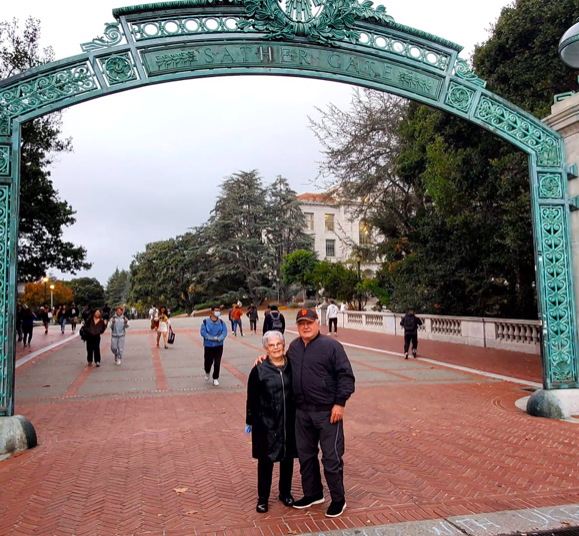
U.C. Berkeley Sather Gate. Lang’s parents in 2022, 65 years since they first stepped foot on campus.
My fascination with Berkeley had less to do with my alumni parents than with my identity issues. As a Jewish girl in a very non-Jewish place, I felt othered as soon as school started. Every September, when my father made us sit in temple all day for Rosh Hashanah and Yom Kippur, indifferent if missing fill-in-the-blank for math/geography/history/English test, I alone had to ask my teacher for a make-up date. As if that weren’t enough, a different cycle repeated every December, when, in music class, we rehearsed Christmas songs ad nauseam unless I asked Mrs. Hewitt to teach “I had a little dreidel” or some other Hanukkah song, yearning to be heard, seen, acknowledged.
Is it any wonder I’ve landed where I’ve landed?
2. What travel has been a particular inspiration to your work?
What inspires my work—my muse—isn’t travel as much as my permanent residence, in the center of one of the world’s smallest, most misunderstood, most complicated, perhaps most contested and surprisingly heterogeneous countries: Israel.
Did you know?
Israel measures 8,550.2 mi², roughly half the size of Lake Michigan, 290 miles in length and about 85 miles across at the widest point, and is bordered by Lebanon to the north, Syria to the northeast, Jordan to the east, Egypt to the southwest and the Mediterranean Sea to the west
Israel contains some of the world’s holiest sites: the Western Wall, the Dome of the Rock and the Al Aqsa Mosque, the Church of the Holy Sepulcher
The Israel Postal service has a special Letters to God department, for all the letters arriving in Jerusalem from around the world addressed to God; they’re opened and placed into the cracks of the Western Wall
Israel is the only country to have revived a dead language and make it the national one
Israel is only 1/6 of 1% of the landmass of the Middle East
The Dead Sea is the lowest point on earth, at 1,315 feet below sea level at its lowest point
Sabra or prickly pear is the national fruit and the name for someone born in the land
Israel’s population is estimated at 9,656,000 residents: 7,106,000 Jews (73.6% of total population), 2,037,000 Arabs (21.1%) and 513,000 Others (5.3%) according to Central Bureau of Statistics
The recognized religious communities in Israel include Orthodox Judaism, Islam, Druze faith, the Roman, Armenian Catholic, Maronite, Greek Catholic, Syriac Catholic, Chaldean, Greek Orthodox, Syriac Orthodox, Armenian Apostolic and Anglican, and Baháʼí
There are 37,288 African migrants in Israel, primarily Eritrean and Sudanese, according to the Population and Immigration Authority
When Israel was founded in 1948, there were only 806,000 residents; the population is expected to reach 10 million in the next three years
Each one—and there are so many more—is an essay unto itself.
3. Where do you “escape to” to recharge creativity?
Closest escape: a 9-minute walk from my apartment in the heart of Tel Aviv, winding through the Carmel shuk to the crooked streets of an old Yemenite neighborhood to the edge of the Mediterranean Sea. My ideal time of year to stroll the 1.6-mile promenade is winter when the sun is timid and tame compared to late spring/all summer/early fall. I either head north toward the port (direction Lebanon) or south toward the ancient city of Jaffa (direction Egypt).
But to embrace living in such a small place, I need to leave every few months. To really escape. Since moving here in 2011, I’ve been fortunate to travel to Amsterdam; Cote d’Azur/Paris/Brittany/Normandy/Strasbourg; Cinque Terre/Venice/Milan/Naples/Amalfi Coast; Thessaloniki/Ioannina/Meteora/Pelion; Chengdu/Kunming/Shangra-La; Budapest and Berlin, India and Thailand, and next Singapore and Malaysia.
4. Where would you most like to travel to next?
Short-term trip: Morocco.
Long-term, big-picture plan: Central and South America, specifically Peru, Argentina, and Chile. My dream is to live in Lima for at least six months, enroll in Spanish immersion class, volunteer in the community, and travel the continent, see every place that is deemed safe from bottom to top and vice versa. Since covid showed me that I can write and teach writing and yoga remotely, all I need is my laptop and battery.
Jennifer Lang is an American-French-Israeli hybrid. Four-time Pushcart Prize nominee. Flash win in Midland Journal. More flash in Ruminate, Quarter After Eight, Bending Genres, The Gravity of The Thing, Atticus Review, CHEAPPOP, Pithead Chapel, and elsewhere. MFA from Vermont College of Fine Arts. Assistant Editor for Brevity Journal. Run Israel Writers Studio. Yogini: practitioner since 1995, instructor since 2003. Places We Left Behind: a memoir-in-miniature forthcoming in September ’23 and Landed: a yogi’s memoir in pieces & poses October ’24 both with Vine Leaves Press. Find Jennifer online at her website, israelwriterstudio.com, on Facebook (her personal page and the Israel Writer Studio page), and on Instagram @jenlangwrites.
[Photos credited to Jennifer Lang except where otherwise noted.]


